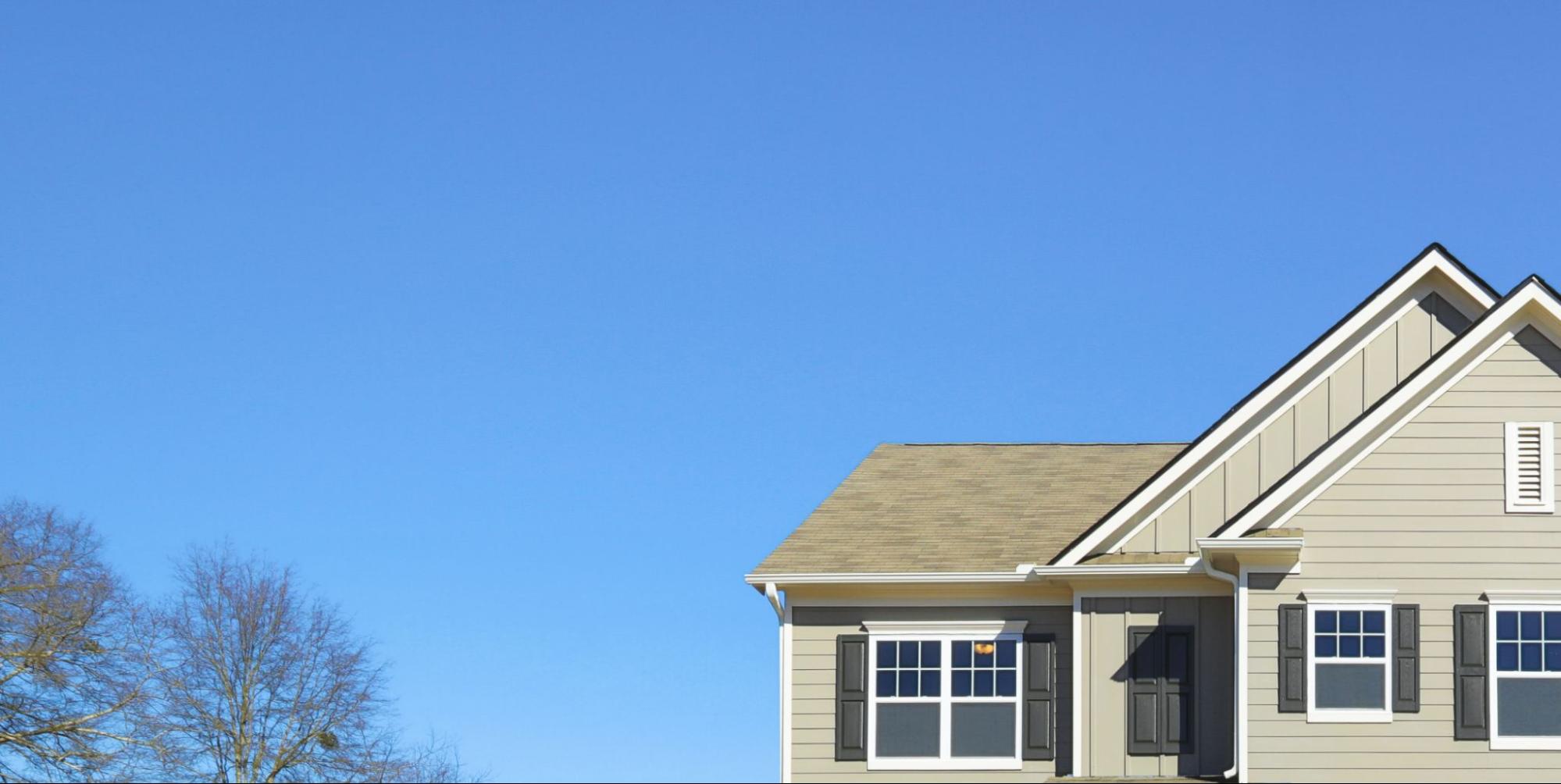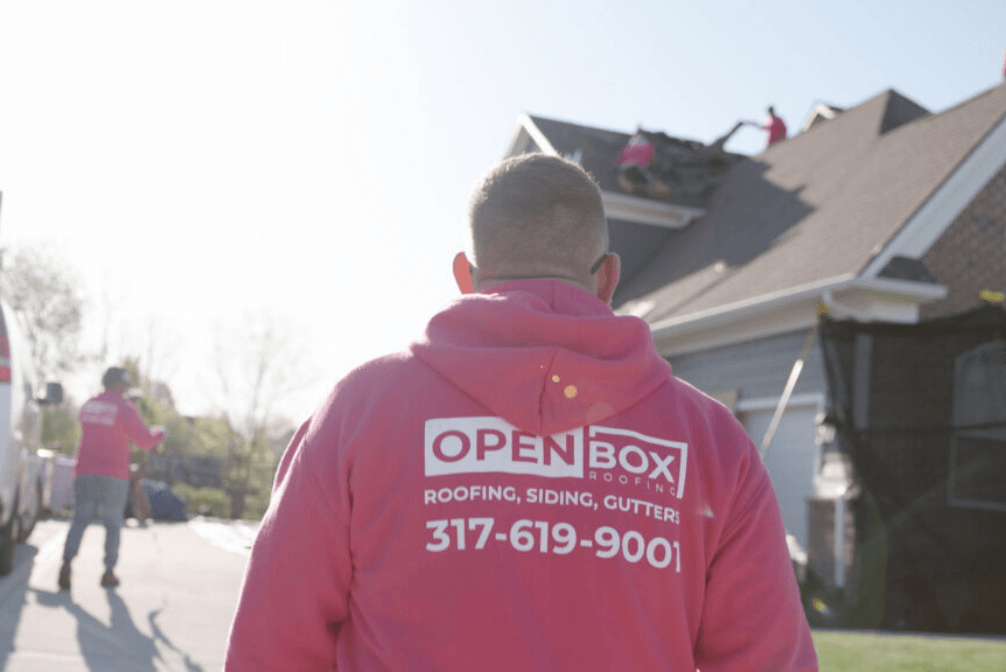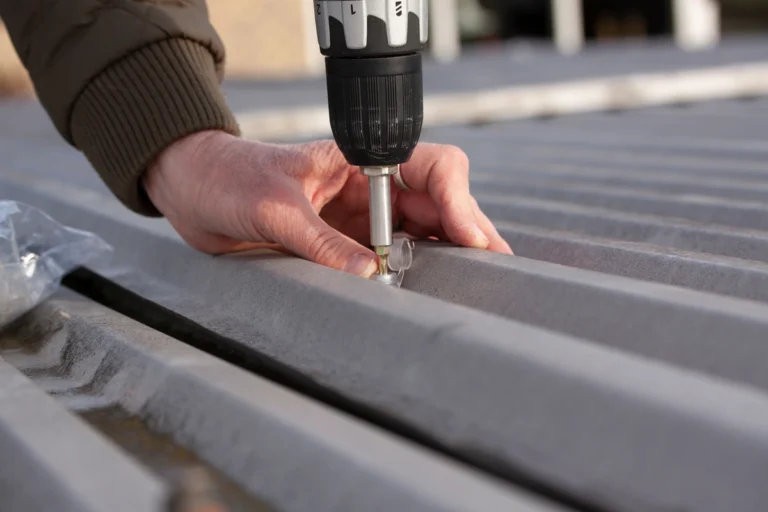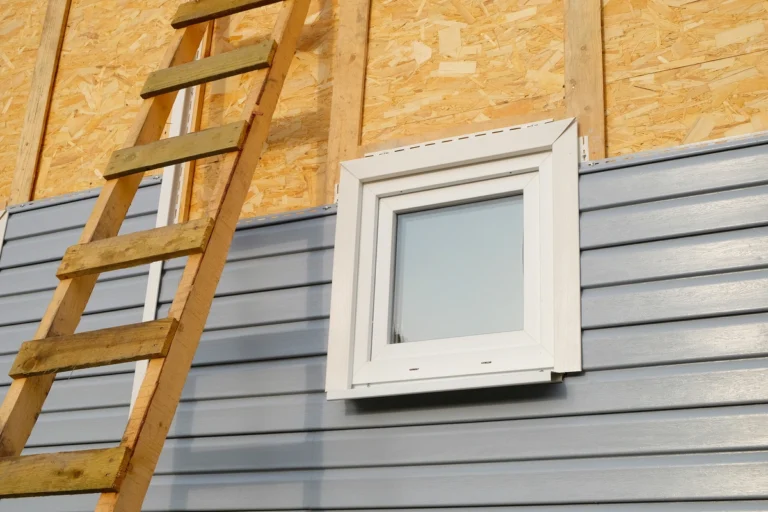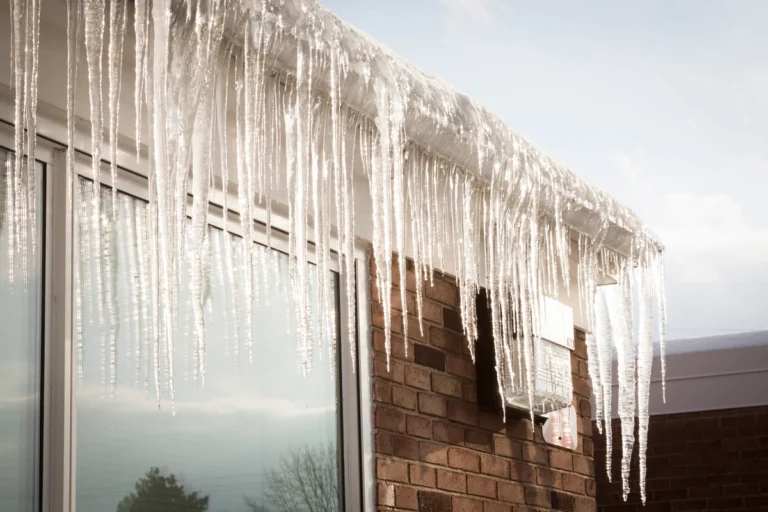Your home’s exterior is its first impression, making siding one of the most crucial components of its aesthetic appeal and structural integrity. Whether you’re building a new house or looking to refresh your current one, selecting the right siding material is essential.
We’ve got the information you need right here, where we’ll delve into everything you need to know about siding, from:
- Recognizing when it’s time for a replacement
- Finding the perfect style for your home
- Estimated costs
Stop wasting time Googling “best siding for house,” and get the facts, below!
Signs It’s Time to Replace Your Siding
Before diving into the world of siding options, it’s essential to recognize the signs that indicate your current siding may need replacing:
- Visible Damage: Cracks, warping, or rotting are clear indicators that your siding is no longer providing adequate protection.
- Increased Utility Bills: Poorly performing siding can lead to energy inefficiency, causing your heating and cooling bills to skyrocket.
- Mold or Mildew: Moisture trapped beneath the siding can result in mold growth, posing health risks and indicating a need for replacement.
- Fading or Peeling Paint: If your paint is peeling or fading unevenly, it may be a sign that your siding is no longer holding up against the elements.
5 Best Siding Materials for Homes
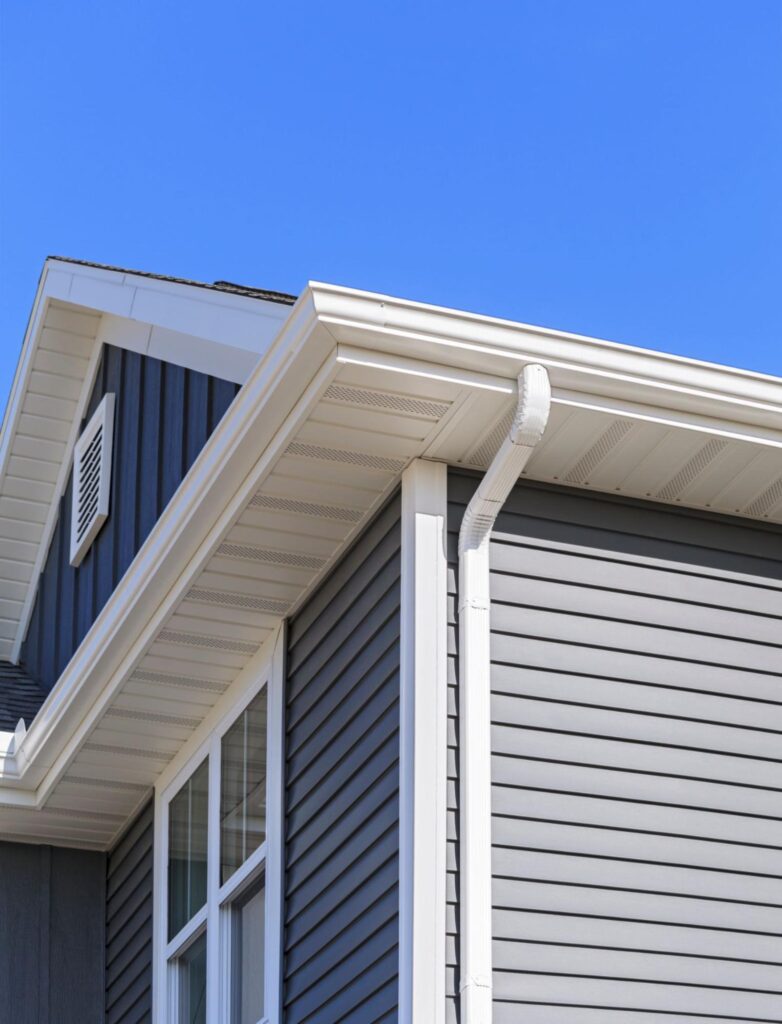
When it comes to siding, there’s no shortage of options. Here are some of the most popular styles:
1) Vinyl Siding:
Affordable and versatile, vinyl siding comes in a variety of colors and textures, requiring minimal maintenance.
2) Wood Siding:
Known for its timeless beauty, wood siding offers a natural aesthetic and can be painted or stained to match your preferences.
3) Fiber Cement Siding:
Durable and fire-resistant, fiber cement siding mimics the look of wood while requiring less maintenance and offering superior protection against the elements.
4) Brick Siding:
Renowned for its durability and classic appeal, brick siding adds a touch of elegance to any home and requires little maintenance.
5) Stone Veneer Siding:
Offering the look of natural stone at a fraction of the cost, stone veneer siding is lightweight and easy to install, providing a rustic charm to your home.
Popular Siding Brands
When it comes to quality siding materials, certain brands have established themselves as industry leaders, known for their durability, innovation, and reputation for excellence. Here are a few of the top siding brands to consider for your home:
James Hardie:
James Hardie is renowned for its fiber cement siding, known for its durability, versatility, and resistance to rot, fire, and pests. Their products come in a wide range of colors and styles, offering homeowners the flexibility to achieve their desired look.
CertainTeed:
CertainTeed offers a diverse selection of siding options, including vinyl, fiber cement, and composite materials. Their siding products are known for their durability, energy efficiency, and low maintenance requirements, making them a popular choice among homeowners.
LP SmartSide:
LP SmartSide specializes in engineered wood siding products that combine the natural beauty of wood with the durability of engineered materials. Their siding is treated to resist moisture, termites, and fungal decay, offering long-lasting performance and aesthetic appeal.
Royal Building Products:
Royal Building Products manufactures a variety of siding options, including vinyl, composite, and cellular PVC materials. Their siding products are known for their durability, low maintenance requirements, and wide range of colors and styles to suit any home’s aesthetic.
Alside:
Alside offers a comprehensive range of siding options, including vinyl, steel, and fiber cement materials. Their siding products are engineered for durability, energy efficiency, and resistance to fading, warping, and cracking, providing homeowners with peace of mind and lasting beauty.
When selecting a siding brand, be sure to research each company’s product offerings, warranties, and customer reviews to ensure you choose the best option for your home’s needs and budget. Working with a reputable contractor can also help you navigate the selection process and find the right siding solution for your home.
Benefits of Replacing Your Siding
Investing in new siding can offer a multitude of benefits beyond just improving your home’s appearance:
- Enhanced Curb Appeal: Upgrading your siding can instantly boost your home’s curb appeal, increasing its value and making it more attractive to potential buyers.
- Improved Energy Efficiency: Newer siding materials are designed to provide better insulation, helping to regulate indoor temperatures and reduce energy consumption.
- Increased Durability: Modern siding materials are engineered to withstand harsh weather conditions, offering enhanced protection against moisture, pests, and UV rays.
- Low Maintenance: Many newer siding options require minimal maintenance, saving you time and money on upkeep in the long run.
- Personalization: With a wide range of colors, textures, and styles available, replacing your siding allows you to customize the look of your home to suit your taste and style preferences.
Cost to Replace Your Siding
The cost of replacing your siding can vary depending on several factors, including the size of your home, the chosen siding material, and any additional features or customization options. On average, homeowners can expect to pay between $5,000 and $15,000 for a full siding replacement, with prices ranging higher for larger homes or premium materials.
Here’s a breakdown of the average cost per square foot for some common siding materials:
- Vinyl Siding: $3 to $7 per square foot
- Wood Siding: $6 to $12 per square foot
- Fiber Cement Siding: $5 to $12 per square foot
- Brick Siding: $8 to $10 per square foot
- Stone Veneer Siding: $8 to $15 per square foot
It’s important to obtain quotes from multiple contractors and carefully consider the long-term benefits and maintenance requirements of each material before making a decision.
How to Find a Good Contractor
Choosing the right contractor is crucial to the success of your siding replacement project. Here are some tips for finding a reputable contractor:
Ask for Recommendations:
Seek recommendations from friends, family, or neighbors who have recently had siding work done.
Research Online:
Utilize online review platforms and contractor directories to research local siding contractors and read customer feedback.
Check Credentials:
Ensure that the contractor is licensed, bonded, and insured, and inquire about their experience and qualifications.
Request References:
Ask the contractor for references from past clients and take the time to contact them to inquire about their experience.
Get Multiple Quotes:
Obtain quotes from several contractors to compare pricing, services, and timelines before making a decision.
Will Insurance Cover Siding Replacements?
Whether or not your homeowner’s insurance will cover the cost of siding replacement depends on the cause of the damage and your policy’s specific coverage details. In general, insurance may cover siding replacement if the damage is caused by a covered peril, such as:
- Storm Damage: Hail, wind, or other severe weather events that cause damage to your siding may be covered by your insurance policy.
- Fire or Vandalism: Damage resulting from fire, vandalism, or other malicious acts may also be covered under your homeowner’s insurance.
- Water Damage: Siding damage caused by sudden or accidental water leaks, such as burst pipes or plumbing issues, may be covered depending on the circumstances.
However, normal wear and tear or damage resulting from neglect or lack of maintenance are typically not covered by insurance. It’s essential to review your policy carefully and consult with your insurance provider to understand your coverage and any potential exclusions.
Learn More About These and Other Siding Materials
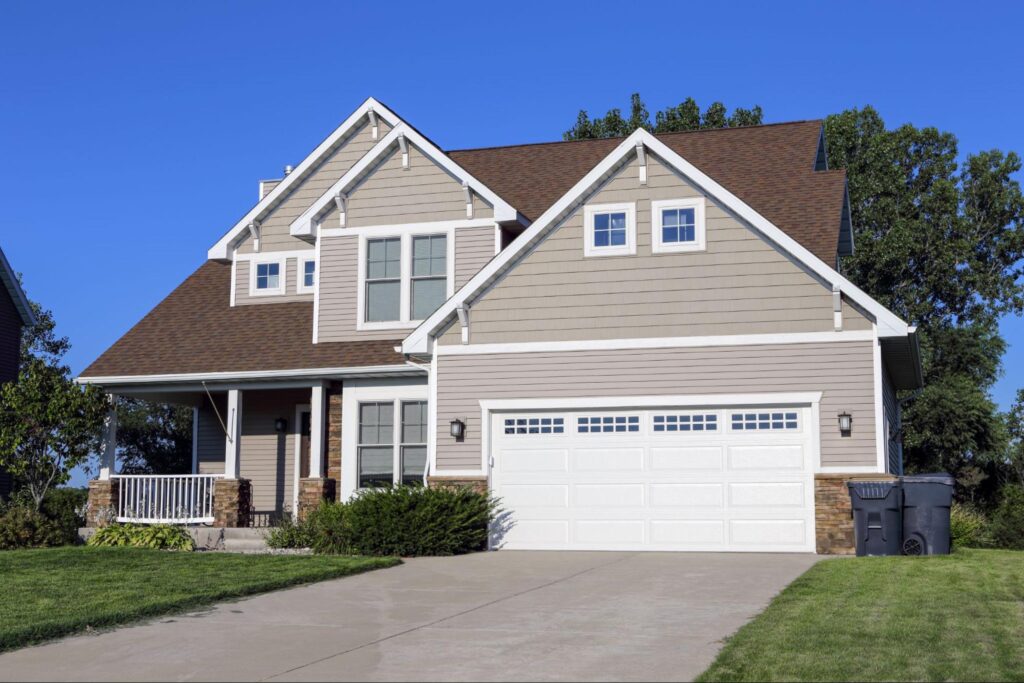
Choosing the right siding for your home is a significant decision that can have a lasting impact on its appearance, value, and structural integrity. By understanding the signs that indicate it’s time for a replacement, exploring popular siding styles, weighing the benefits of upgrading, considering the cost and finding a reputable contractor, you can make an informed decision that enhances your home’s beauty and functionality for years to come.
Remember to review your insurance coverage and consider any potential financial assistance available for your siding replacement project. With the right knowledge and guidance, you can transform your home’s exterior and enjoy the many benefits of quality siding materials.
For guidance on energy efficient siding and more, contact Open Box Roofing!
